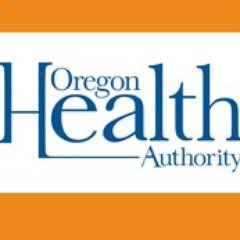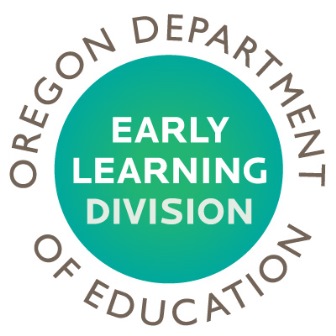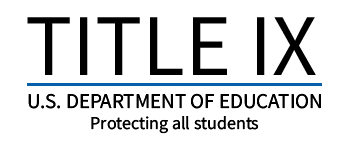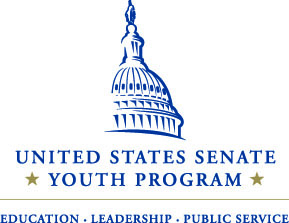OHA No Longer Reporting School Outbreaks
 As Oregon enters the fourth school year impacted by the COVID-19 pandemic, schools and local public health authorities are practiced and equipped to manage COVID-19 while maintaining access to in-person learning for every student, every school day.
As Oregon enters the fourth school year impacted by the COVID-19 pandemic, schools and local public health authorities are practiced and equipped to manage COVID-19 while maintaining access to in-person learning for every student, every school day.
The Oregon Health Authority (OHA) is no longer producing biweekly reports that include the number of COVID-19 outbreaks in schools.
Due to the processes required to identify and report an outbreak, OHA’s school outbreak reports do not contain the most up-to-date outbreak information for schools or families, as data are reported retrospectively, in some cases up to several weeks after an outbreak.
These changes do not affect case and outbreak reporting to OHA. Monitoring outbreaks, especially in high-consequence settings, remains a priority for OHA.
ODE will continue to work with local public health authorities to provide resources and support during outbreak responses, as appropriate. ODE and OHA continue to recommend that schools notify cohorts potentially exposed to COVID-19 as soon as possible to reduce the risk of spread.
School districts will continue to make local policy decisions about COVID-19 protocols to mitigate spread and ensure in-person learning in their school community, including communicating health and safety measures needed based on illness and absence in their school community. You will be able to
find school level COVID-19 management plans on the ODE website beginning August 26.
Oregon Early Childhood Suspension and Expulsion Prevention Program
 The passage of
HB 2166 and
SB 236 in July 2021 established the Early Childhood Suspension and Expulsion Prevention Program and
launched an Oregon study. In 2022, the Oregon Legislature passed
HB 5202 and approved funding for the program. The purpose of the Early Childhood Suspension and Expulsion Prevention Program is to:
The passage of
HB 2166 and
SB 236 in July 2021 established the Early Childhood Suspension and Expulsion Prevention Program and
launched an Oregon study. In 2022, the Oregon Legislature passed
HB 5202 and approved funding for the program. The purpose of the Early Childhood Suspension and Expulsion Prevention Program is to:
- Reduce the use of suspension, expulsion, and other forms of exclusionary discipline in early care and education (ECE) programs, and
- Reduce disparities in the use of suspension, expulsion, and other forms of exclusionary practices in ECE programs based on race, ethnicity, language, ability, or gender.
From April to July 2022, a group of community members formed a
Rulemaking Advisory Committee and drafted the new rules for this program. For more information on the Early Childhood Suspension and Expulsion Prevention Program, including a background, timeline, and resources,
visit the Early Learning Division website. Watch for updates as this program continues to develop.
U.S. Department of Education Releases Proposed Changes to Title IX Regulations, Invites Public Comment
 As part of the 50th anniversary of Title IX – the landmark civil rights law that has opened doors for generations of women and girls – the U.S. Department of Education released for public comment proposed changes to the regulations that help elementary and secondary schools and colleges and universities implement this vital legislation. The proposed amendments will restore crucial protections for students who are victims of sexual harassment, assault, and sex-based discrimination – a critical safety net for survivors that was weakened under previous regulations.
The proposed regulations will advance educational equity and opportunity for women and girls across the country to ensure that every student in America, from kindergarten through a doctorate degree, can achieve her dreams.
As part of the 50th anniversary of Title IX – the landmark civil rights law that has opened doors for generations of women and girls – the U.S. Department of Education released for public comment proposed changes to the regulations that help elementary and secondary schools and colleges and universities implement this vital legislation. The proposed amendments will restore crucial protections for students who are victims of sexual harassment, assault, and sex-based discrimination – a critical safety net for survivors that was weakened under previous regulations.
The proposed regulations will advance educational equity and opportunity for women and girls across the country to ensure that every student in America, from kindergarten through a doctorate degree, can achieve her dreams.
The proposed regulations would:
- Clearly protect students and employees from all forms of sex discrimination.
- Provide full protection from sex-based harassment.
- Protect the right of parents and guardians to support their elementary and secondary school children.
- Require schools to take prompt and effective action to end any sex discrimination in their education programs or activities – and to prevent its recurrence and remedy its effects.
- Protect students and employees who are pregnant or have pregnancy-related conditions.
- Require schools to respond promptly to all complaints of sex discrimination with a fair and reliable process that includes trained, unbiased decision-makers to evaluate the evidence.
- Require schools to provide supportive measures to students and employees affected by conduct that may constitute sex discrimination, including students who have brought complaints or been accused of sex-based harassment.
- Protect LGBTQI+ students from discrimination based on sexual orientation, gender identity, and sex characteristics.
- Clarify and confirm protection from retaliation for students, employees, and others who exercise their Title IX rights.
- Improve the adaptability of the regulations’ grievance procedure requirements so that all recipients can implement Title IX’s promise of nondiscrimination fully and fairly in their educational environments.
- Ensure that schools share their nondiscrimination policies with all students, employees, and other participants in their education programs or activities.
The Department will engage in a separate rulemaking to address Title IX’s application to athletics.
The proposed Title IX regulations will be open for public comment through September 12.
Comments may be submitted online. Additional
information on the proposed rule is available on the U.S. Department of Education’s website.
October Deadline for Students to Apply to U.S. Senate Youth Program
 Every year, two students from Oregon are chosen to participate in the U.S. Senate Youth Program (USSYP). Qualified high school juniors or seniors must show demonstrated leadership by serving in elected or appointed positions in which they are actively representing a constituency in organizations related to student government, education, public affairs and community service. They must be actively serving in qualified leadership positions, enrolled in high school and living in Oregon for the entire 2022–2023 academic year.
Every year, two students from Oregon are chosen to participate in the U.S. Senate Youth Program (USSYP). Qualified high school juniors or seniors must show demonstrated leadership by serving in elected or appointed positions in which they are actively representing a constituency in organizations related to student government, education, public affairs and community service. They must be actively serving in qualified leadership positions, enrolled in high school and living in Oregon for the entire 2022–2023 academic year.
More information is available at the USSYP website.
For Oregon the application is due no later than October 10th 2022. The students selected to represent Oregon receive a $10,000 undergraduate college scholarship and participate in a week-long government and leadership education program. The 61st annual United States Senate Youth Program Washington Week is planned for March 4-11, 2023 in Washington, D.C.
Frequently Asked Questions About the Emerald Ash Borer in Oregon
Submitted by Kristin Ramstad, Oregon Department of Forestry
 As you may have heard, the invasive and destructive pest, emerald ash borer (EAB) has been detected recently at a school in Forest Grove. Here are the answers to some of the questions school facility managers, groundskeepers and administrators may have about the pest and how they should prepare for it.
As you may have heard, the invasive and destructive pest, emerald ash borer (EAB) has been detected recently at a school in Forest Grove. Here are the answers to some of the questions school facility managers, groundskeepers and administrators may have about the pest and how they should prepare for it.
- What’s the Big Deal about EAB?
- Although ash trees are not one of the most common urban trees in Oregon, tens of thousands of beautiful, large, non-native ashes are growing in parks, yards and school grounds statewide. The experience in other states shows that up to 99 percent of all ash trees in cities and towns die within a few years of the arrival of emerald ash borer. We expect the same will be true in Oregon.
- Will the State of Oregon be attempting to eradicate this outbreak?
- Given the distance female emerald ash borers can fly, it is almost certain that this pest has already spread too widely in Oregon to eradicate. The focus now is on preventing people from spreading it farther and faster than it would naturally travel. One way all of us can slow the spread of this pest is by reminding everyone: do NOT move firewood - all firewood - beyond the local area where it is cut.
- What does the State of Oregon recommend School Districts do about EAB at this point?
Healthy, well cared-for trees around schools contribute to student and staff health in many ways. In addition to providing shade on warm days, trees slow rainwater runoff, cleanse the air, provide opportunities for curricula development and play and can calm anxieties and conflict.
School district facility staff can assist in EAB-slowing efforts by:
-
Familiarizing themselves about the lifecycle, signs, symptoms and appearance of the tiny insect, and knowing how to identify both native and nonnative ash trees (see links at the end of this article). By August, the adult beetles have stopped flying, so look on ash trees for tiny D-shaped exit holes on the trunk and tree limbs, clumpy leaf and branch growth, bark that has been flaked away and dead branches in the tree’s crown.
-
Avoiding planting any more ash trees in schoolyards.
-
Stopping the premature, and preemptive removal of ash trees from schoolyards. Many large and significant ash trees can be and have been conserved by using systemic treatments that kill EAB. These treatments cost a lot less than removing a large tree. Typically, these treatments are implemented when EAB is detected within 15 miles of a given location. Most importantly,
no trees should be removed from schoolyards without an EAB preparedness and response (P&R) plan in place. An EAB P&R plan describes not only plans for tree removal, but also strategies for keeping stately ashes alive, disposing of the infested wood and replanting with other trees soon after ash tree removal.
Since experience shows that heavily infested trees cannot be saved, do not waste resources trying to spray or chemically treat infested trees. Prompt removal is advised.
- Where should school district staff look for guidance on ash tree treatments?
- The Oregon Department of Agriculture (ODA), the lead agency in EAB response, regulates pesticide use in Oregon and is developing guidance on what treatments can be safely used in Oregon. These will be available soon. Be aware that some school districts may have local restrictions on certain classes of pesticides, but ultimately, there should be treatments available for most types of situations/restrictions. It’s best to purchase treatments from reputable tree-care companies to avoid ineffective or fraudulent applications.
- Should school district staff be actively looking for EAB?
- District staff that work around trees should be familiar with
the signs and symptoms of EAB, and keep this information “front of mind” when working outside. The Oregon Department of Agriculture’s
EAB webpage is an excellent resource for current EAB information. However, it is also important to remember that drought, disease, and other factors can make ash trees look unhealthy, so no one should presume their declining ashes have EAB yet unless its presence has been officially confirmed. Also, there are several native
emerald ash borer “look alike” beetles. So, if one sees a green metallic beetle or other EAB signs and symptoms try to document them with clear photos, note the location, and report them to the
Oregon Invasives Hotline.
If you have more questions about EAB, please get in touch with us at
urbanforestry@odf.oregon.gov. If you want to report a suspected EAB infestation, please use the
Oregon Invasives Hotline.
ODE In the News